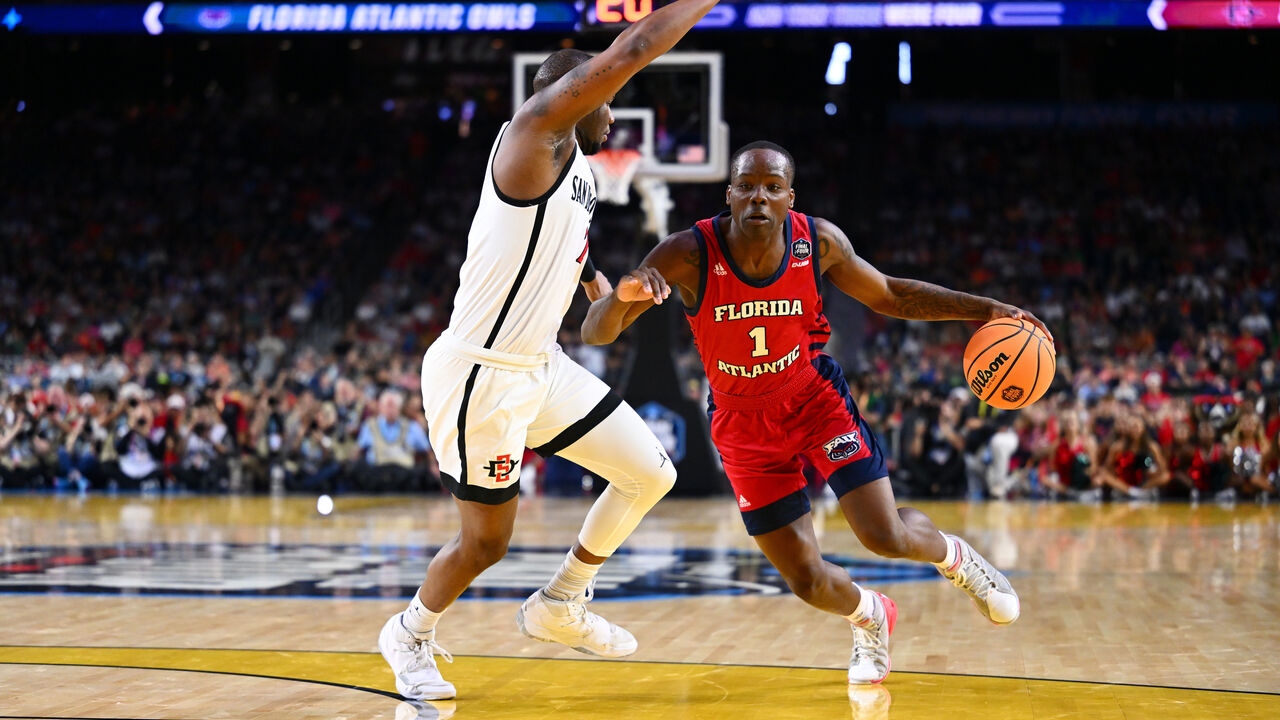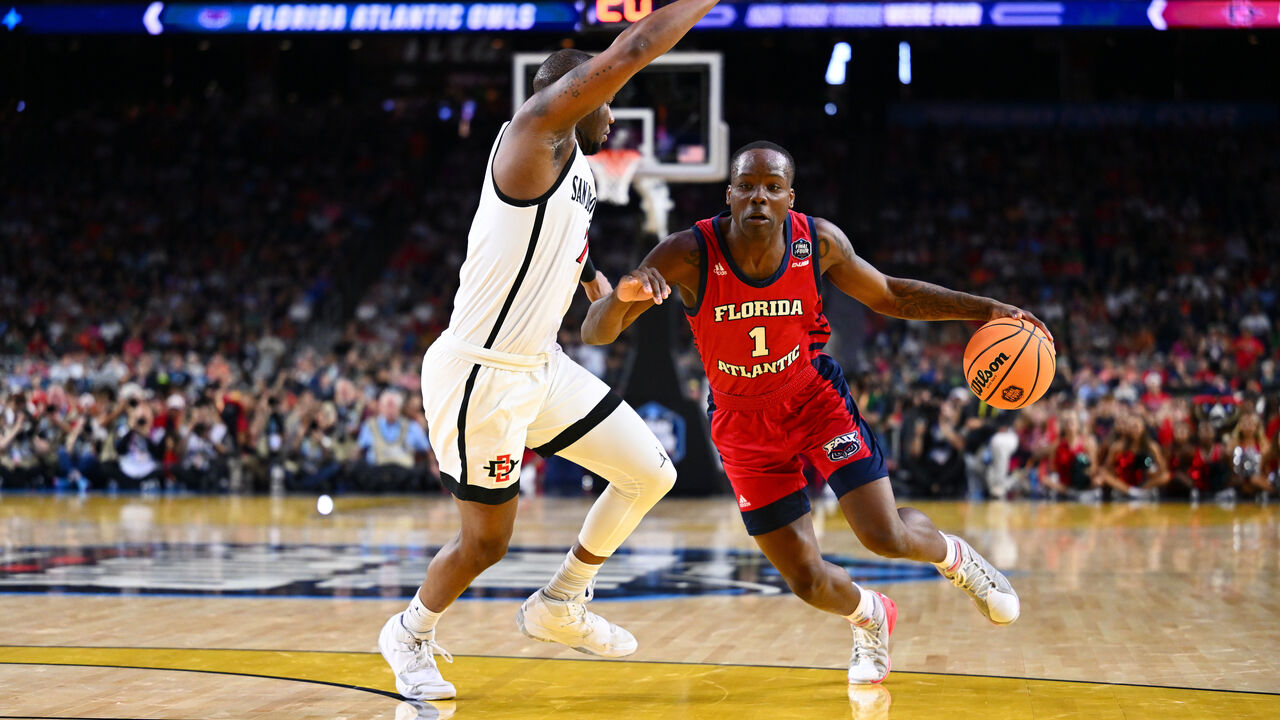3 ways San Diego State stormed back for epic Final Four win
For most of Saturday’s early Final Four contest in Houston, Florida Atlantic looked to be well on its way to becoming the first No. 9 seed to ever make the NCAA Tournament final.
The Owls were scorching from deep on the stingy San Diego State defense and built up a 14-point lead early in the second half. The deficit was significant – only four teams had ever come back from 14 points or more in a national semifinal.
Slowly, the Mountain West program chipped away at the lead and claimed the incredible comeback victory on a buzzer-beater for the ages.
Here are the three ways the Aztecs were able to flip the script on Saturday and advance to the first tournament final in program history.
San Diego State wins rebounding battle
San Diego State’s effort on the glass – specifically in the second half – may have single-handedly decided the game’s outcome. Over the final 20 minutes, the Aztecs had nine offensive rebounds – including three apiece from Jaedon LeDee and Matt Bradley – which led to five second-chance points.
Four of those offensive boards came off their own missed free-throw attempts in a 2:02 span late in the second half. While those extra possessions resulted in just three points, they allowed San Diego State to take control of the clock and take away scoring opportunities from Florida Atlantic down the stretch.
In a game ultimately decided by just one point, securing an additional rebound may have been the difference between a heartbreaking defeat and a national championship berth.
FAU lacked balance in 2nd half

FAU’s offense was simply firing on all cylinders to begin the game, dropping 40 points on a helpless San Diego State defense in the first half. The most notable aspect of the performance was that all nine players who suited up for the Owls scored at least two points, but none hit double figures. The unpredictability on each possession meant the Owls generated a good shot every time they got down the floor, allowing their free-flowing offense to thrive.
Everything changed in the second half. Sophomore guard Alijah Martin went off for 19 points in the frame but was nearly all alone in the scoring column, with the rest of his team mustering just 12 points. While Martin went 4-of-6 from the field and a perfect 9-of-9 from the free-throw line, the other Owls went just 4-of-18 on field goals and 3-of-7 from the charity stripe.
This discrepancy showed up on FAU’s final offensive possession. With the Aztecs so keyed in on Martin, fellow guard Johnell Davis was forced to take the shot, leading to a miss and giving San Diego State one final chance.
Aztecs trusted Butler with game on the line
It isn’t quite as monumental as Kris Jenkins’ tournament-winner for Villanova in 2016, but Lamont Butler forever etched his name in March Madness lore with the shot to send San Diego State to the final.
SAN DIEGO STATE WILL PLAY FOR THE NATIONAL CHAMPIONSHIP pic.twitter.com/5NWXWvl138
— CBS Sports College Basketball ? (@CBSSportsCBB) April 2, 2023
An end-of-game isolation situation requires incredible trust in the player with the ball to deliver in the clutch for his team. San Diego State’s coaching staff clearly trusted Butler to be the man to take that shot, and the junior delivered with the biggest bucket in program history. Butler isn’t the team’s leading scorer, doesn’t average double-figure points, and makes less than 42% of his shots from the arc. So why did the Aztecs put the ball in his hands at the end? Because he’s already shown this season he can rise to the moment to hit the big shot.
Lamont Butler has ice in his veins!
Did this in February vs. New Mexico. Ironically enough also down 71-70 just like the winner tonight vs. FAU pic.twitter.com/CV8Z0AF9Qy
— Connor Kiesel (@ConnorKiesel) April 2, 2023
Safe to say Butler won’t be paying for another meal in the San Diego area in his lifetime.


